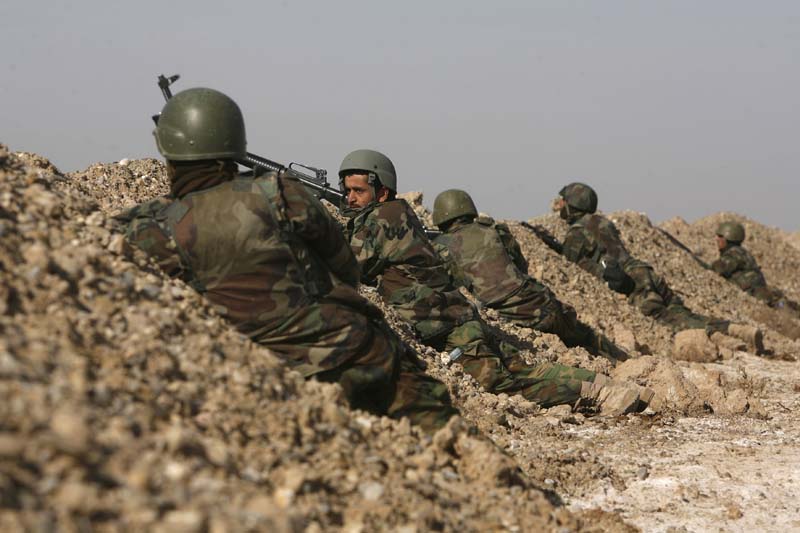|
 By Chris Nineham By Chris Nineham
For weeks the international media has been excitably reporting on NATO's campaign to capture or liberate the 'city' of Marjah in Helmand, southern Afghanistan. But Marjah, it appears, does not exist.
Originally published on Counterfire
US Troops in Marjah
In a long running narrative, the world was told that the occupying forces had shown their concern for the local people by encouraging them to leave the city before it was taken from the remaining 'insurgent forces'.
The extraordinary extent of the fiction that seems to have been sold to the world via an ever willing media now stands exposed.
Marjah, it appears, does not exist. An official from the International Security Assistance Force in Afghanistan (ISAF), who asked not to be identified, first raised questions marks about the situation on the weekend when he told a journalist at Counterpunch in the US that Marjah was 'not urban at all', rather he described it as a 'rural community', ' a collection of village farms, with typical family compounds'.
Other experts have confirmed the view of the ISAF insider. Richard B. Scott, who worked in Marjah as an adviser on irrigation for the U.S. Agency for International Development, agrees that Marjah has nothing that could be mistaken as being urban. It is an "agricultural district" with a "scattered series of farmers' markets," he said.
NATO sources have been quoted saying Marjah had a population of 80,000. The capure of the city has been portrayed as the centrepiece of the 'successful' and extremely high profile recent offensive dubbed 'Operation Moshtaraq'.
But the ISAF official said the only population numbering tens of thousands associated with Marjah is spread across many villages and almost 200 square kilometres, or about 125 square miles. At the moment Marjah is not even officially recognised as an area, let alone being anything approaching a city. At the centre of the area there is a location where farmers gather for markets, but the only permanent features of the spot are a mosque and a few shops.
'Spinning' out of control
According to Gareth Porter, writing on Counterpunch, the earliest references in news stories to Marjah as a city with a large population have a common origin in a briefing given on February 2 by officials at Camp Leatherneck, the U.S. Marine base there.
The media fell into line at once. The Associated Press published an article the same day quoting "Marine commanders" as saying that they expected 400 to 1,000 insurgents to be "holed up" in the "southern Afghan town of 80,000 people."
The decision to turn Marjah into a city and make it the central objective of "Operation Moshtarak" would not have been made independently by the Marines at Camp Leatherneck.
A central task of "information operations" in counterinsurgency wars is "establishing the COIN [counterinsurgency] narrative", according to the Army Counterinsurgency Field Manual as revised under Gen. David Petraeus in 2006. The manual notes that this narrative should be determined at HQ, not in the field.
Military officials have been quite clear about the propaganda importance of operation Moshtaraq. Just before the Marjah offensive was launched, Gen. Stanley A. McChrystal, commander of ISAF went on record as saying "This is all a war of perceptions."
The Washington Post reported Feb. 22 that the decision to launch the offensive against Marjah was intended largely to impress US public opinion with the effectiveness of the US military in Afghanistan by showing that it could achieve a "large and loud victory."
What neither the military nor the media have admitted is that this propaganda war would go so far as to invent cities in order to liberate them.
|



